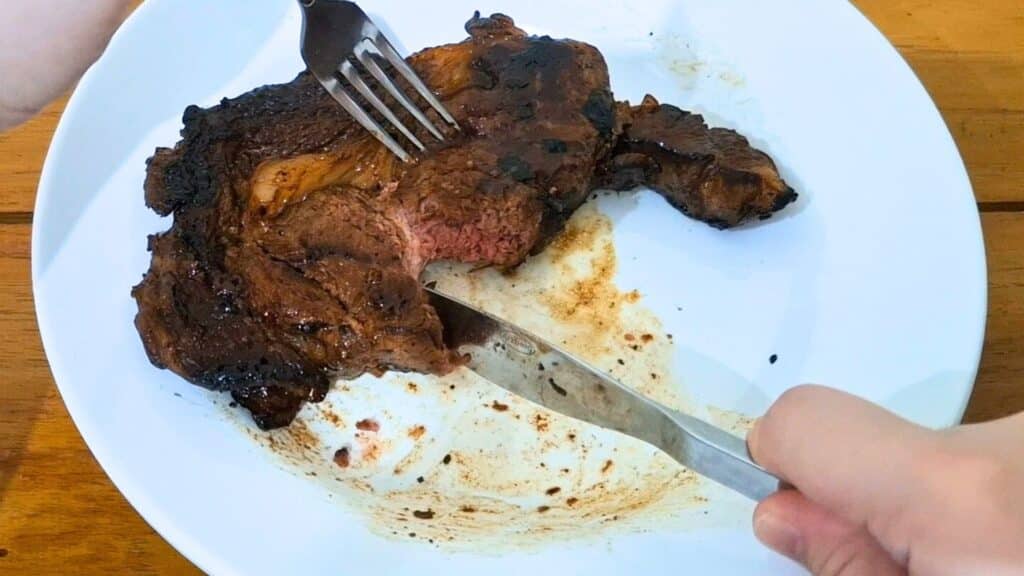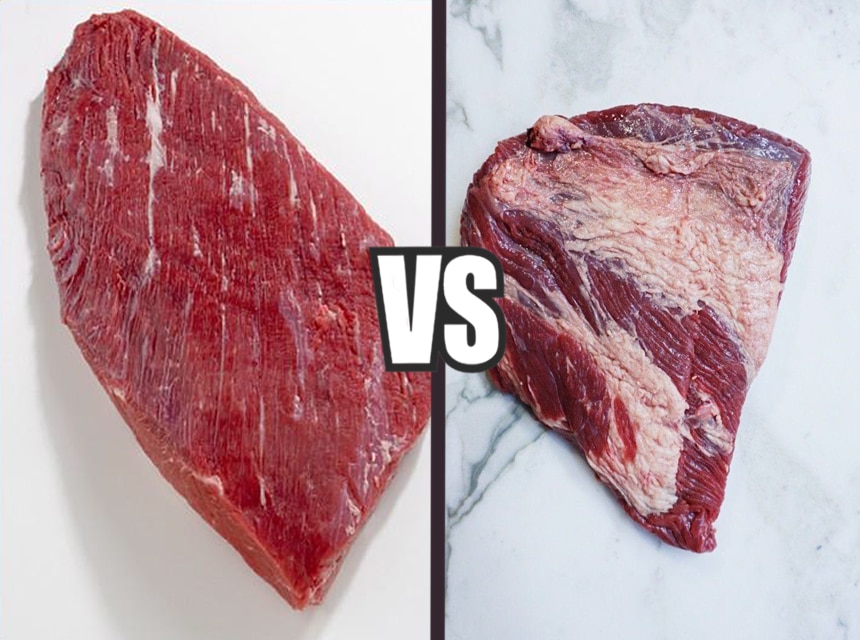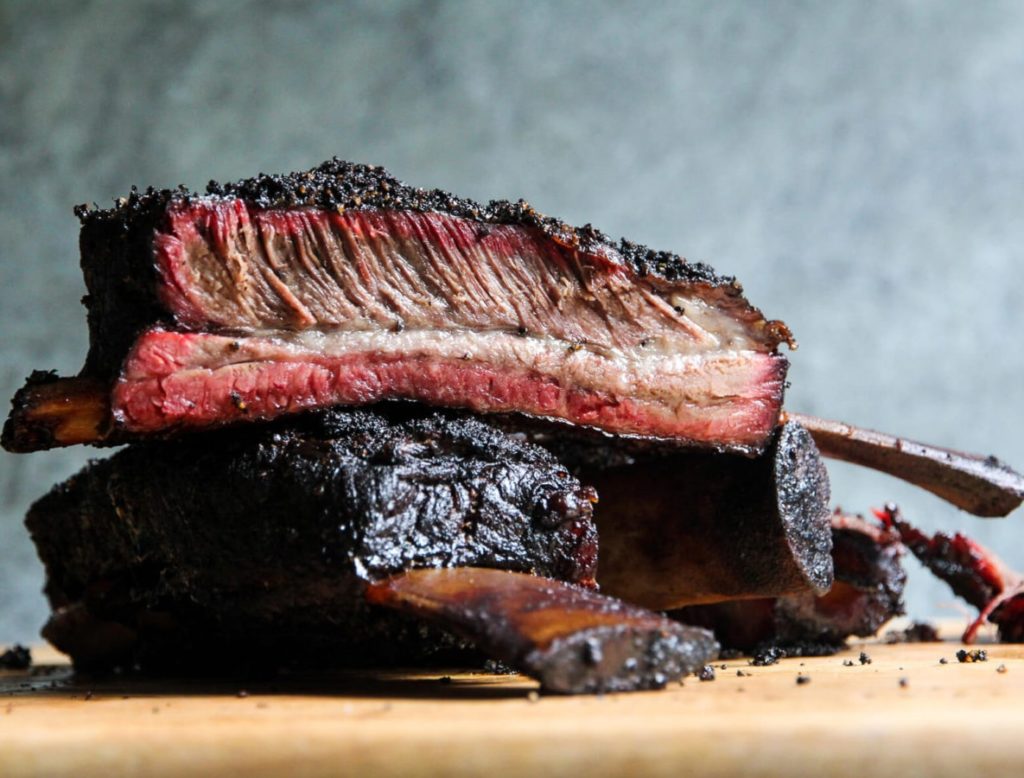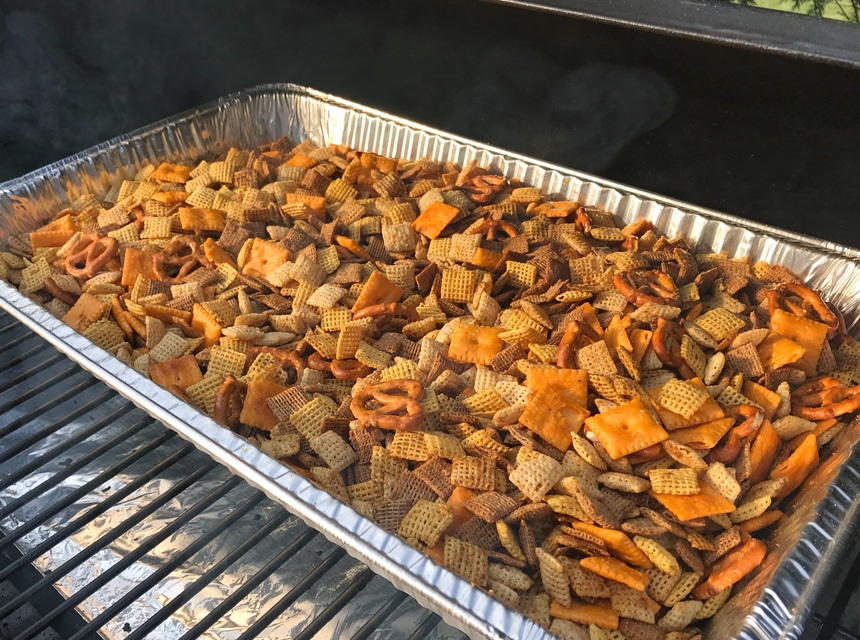

A long time ago, we cured meats in salt and smoked them to preserve them for months. These meats went with us to the battlefield, got us through harsh winters, and the worst of economic times. Today, smoking corned beef is legit haute cuisine that every BBQ enthusiast needs to master.
And no wonder, because a tender slice of perfectly smoked corned beef simply explodes with flavor. The corning process allows the meat to absorb the salt and spice mixture used, while the long cooking process allows it to become tender and juicy.
However, smoking corned beef to perfection is a somewhat technical process. You need an understanding of how the corning process works, the intricacies of temperature and color of the brisket at various stages of the cook, and good old Southern cooking sense. By the end of this step-by-step guide, you should learn how to smoke a corned beef brisket like a pro.
Corned beef is beef that has been cured by treating it with a special mixture of salt, spices, and sometimes sugar as well. Coarse-grained rock salt (or corns, hence the name), together with a special curing salt called Prague Powder 1, react with the meat to give it a distinct red or pink color even after cooking.
Prague Powder 1 is special because it contains nitrates and nitrites that react with the proteins in the meat to give it its characteristic pink color. They also prevent the growth of the bacteria that cause botulism, which helps to make the beef safe for eating even after days or curing.
You can easily make your own corned beef by curing it with a mixture of spices for 5-7 days, depending on its size. All you need to do is make the brine solution as described below:
This recipe is designed for a small flat brisket about 4-5 pounds in weight. It should take a cut that large 7 days to cure properly, after which you should rinse the meat of excess brine and pat it dry.
If, instead of brining, you rub the curing directly onto the meat before smoking, you have a recipe for smoking corned beef for pastrami.
Of course, you can always pick up pre-corned beef from the store or from dedicated high-end butchers and farms. This saves you a week of curing and makes it much more convenient.
Any cut of meat could theoretically be corned, but this particular recipe calls for brisket. The brisket is a tough, relatively fatty cut that is perfectly suited for the extensive brining and slow cooking method required here.
If you know anything about BBQ and its intricacies Trusted Source BBQ: The Ultimate Guide - The Wall Street Journal That’s BBQ: elemental, highly adaptable cooking that makes the most of what’s at hand. www.wsj.com , you can immediately tell that brisket is perfect for corning and smoking. When you buy a brisket, chances are that it will already have been cut into two parts: the brisket flat and the brisket round.
The round half of the brisket is typically thicker, has a bit more fat, and thus makes for a tender and juicier smoked brisket. It is also called the point cut or second cut. The flat half of the brisket is tougher, has less fat content, and thus makes for a more presentable piece of BBQ after cooking is done.
While either cut of brisket is great for corned beef, the flat is preferable because it has less fat and holds up better. Ultimately, choosing the best cut of brisket for corning is a matter of personal opinion.
Due to its extra fat content, the brisket round takes a slightly different smoking process to make the most of its attributes.
The brisket round typically weighs 8-10 pounds, which puts it on the larger side. Because it is more tender, it is often recommended for medium-rare cooking and should also be sliced thick to reduce shredding
You will need a smoker to cook the brisket in. Smoking corned beef brisket on a pellet grill is probably best, but you can use best electric smokers.
If you have the electric grill, you will also need to buy a smoke tube for your electric smoker to create the flavorful fruit smoke needed.
There are lots of smoker tubes out there, but the A-MAZE-N Pellet Tube Smoker from Pitmasters has stolen the hearts of BBQ fans. The unit produces very little ash with a lot of smoke output and lasts 4-5 hours easily, which makes it a must-have for any serious BBQ enthusiast.
A wireless thermometer works great because it gives you instant reads on the internal temperatures of your brisket. If you don’t have one, a meat probe will do.
A pair of heat-resistant gloves will be very useful in helping you to handle the meat while it is cooking. A pair of nitrile BBQ gloves will do a great job, besides being useful for putting on the rub.
If your corned beef brisket gets too dry, you will need to spritz some water, vinegar, or apple juice onto it to restore moisture.
Apart from the smoker and smoker tube, you will also need some good quality butcher paper to wrap the meat in and a brisket carving knife to cut up the meat when it’s ready to serve.
Smoked Corned Beef Brisket Flat: Recipe
The flat half of your corned brisket is usually smaller, about 2-4 pounds. It is smoked for longer, up to 6 hours at 250F. This long cooking period is necessary because brisket flat comes from a more muscular part of the animal, which means it has more collagen that needs to be broken down slowly.
For a tender and well-cooked corned beef brisket flat, you should aim for a final internal temperature of 190F-210F. Your brisket flat is done when you can push your probe into the meat like a knife through butter.
Corned beef today makes an appearance mostly on St. Patrick’s Day in the company of cabbage, carrots, potatoes, and other ingredients to create the ultimate family meal. However, smoking corned beef makes it into a far more praiseworthy meal when done right.
The secret to smoking corned beef is knowing the details of what goes on before, during, and after the cooking. How the curing process changes the meat, what story the temperature tells, and the final color and texture of the meat all come into account. Thankfully, now you know how to transform a traditionally hardship food into a meal fit for a holiday – like St. Patricks.





